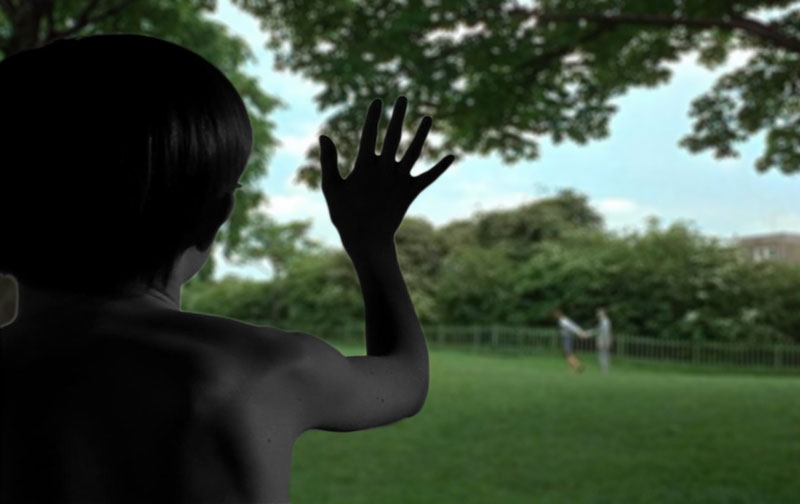Double Feature: Persona & Blow-Up

Persona and Blow-Up
Last night I caught a double feature at the Paramount Theater here in Austin. A 35mm print of Ingmar Bergman’s Persona followed by a beautiful DCP of Michelangelo Antonioni’s Blow-Up. Both films had somehow eluded me all these years, so it was nice to see them with a crowd on the big screen.
I sat way up close for Persona. As film prints become rarer to come by, I like to get my face close up to them and take in every detail they have to offer. Also, when a film is not widescreen, the imposing vertical space of the screen can best be experienced in the front few rows (for me, at least).
I was happy that the Paramount eschewed any form of introduction for the Bergman film. For those who haven’t been, it’s an old-school movie palace in the heart of downtown. For most of the year it’s a live music/event venue, but all summer long they run classic films. Since it’s not a movie theater first and foremost, there are no previews, no “Be quiet and please visit the concession stand” bumper to start things off.
Usually there is a curator of some sort to come out and tell you a bit about the film. Not last night, though. Instead the lights went down, the projector started, the massive red curtain opened up and suddenly we were in Bergman’s world. This, I think, made for the perfect first viewing of Persona, especially since the film’s end is an exact reverse of of its opening. In this case, that included the red curtains shutting as the projector went off.
The film is a puzzle whose pieces get increasingly more complex as time passes. Once you think you have a handle on things, another shocking revelation will come to you. Its most audacious conceit is that you, the viewer, are very much watching a film. Perhaps a film within a film, or maybe some meta-film in which you are a participant. I have trouble believing that any two people in the theater last night had the same experience. It’s a deeply personal experience.
For the purposes of my writing here, the plot of the film is irrelevant. You can find essays and descriptions and reviews elsewhere. After I publish this I plan to read Thomas Elsaessar’s essay on the Criterion website, and I will watch Richard Brody’s “DVD of the Week” video. I’d rather not cloud my own thoughts in the meantime.
Sven Nykvist’s black-and-white photography looks gorgeous on 35mm. The gradations he is able to pull out of a scene are astonishing. Together, Bergman and Nykvist make up one of the great filmmaking teams. The resulting images, the signature closeups and characters whose faces bisect one another, either through trick photography or, more often, clever blocking with exacting focus, are astounding to behold on the big screen.
I’ve only seen a few of Bergman’s films.1 Each one, though, always has a profound impact on me. Persona is no different. As I’m guessing it has for countless viewers before me, it has thrown into question my beliefs of what the cinema is capable of. There are psychological depths that remain to be plumbed by this incredible art form. In 1966, Bergman brought various styles together to show us just some of what film is capable of.
Anotnioni’s Blow-Up is also from 1966, and though superficially these films seem starkly different, they made for a nice back-to-back pairing. Colorful, modish and in English, the film starts off feeling like Hollywood, but obviously not. Something is off, and over time the film asks us to delve deeper into our own psyches. Like Persona it possesses a meta-narrative, one that asks each of us to consider and re-consider: what are we watching?
I moved my seat further back in the theater for Blow-Up. I try to avoid DCP screenings as they tend to, still, look like video to me. If I’m going to see one, I’d rather move back so the image can hold together better. Up close I start to see the pixels. To my great surprise and delight, the DCP I saw last night was gorgeous. I could tell it wasn’t film, but most scenes were extremely convincing. Nice to see that so much of the original grain and movement has been retained. DCP bitrates must have gotten better since the last repertory screening I went to.2
Blow-Up is a film about the narrative process. Do we even know what reality is? What we see? What we don’t? Can we trust our own memories to be honest with us? Does memory change? I’m glad I finally saw this one, which I’ve been meaning to see forever. A lot to unpack in it, all while being a stylish ride. It feels almost like two separate films, one about the indulgences of a playboy photographer and another that explores the existential, philosophical questions mentioned above.
Of course, the appeal is that it is not two films. Antonioni manages to bring all the strands together into one cohesive whole. We can have a film that feels both weighty and disposable at the same time.
-
Perusing his ouvre, I know I’ve seen at least Wild Strawberries, The Touch (I interviewed star Elliot Gould when it screened in NYC back in 2011), Cries and Whispers, and Autumn Sonata. ↩︎
-
I’m pretty sure the last one was this double feature of The 400 Blows and Jules and Jim way back in 2009. ↩︎